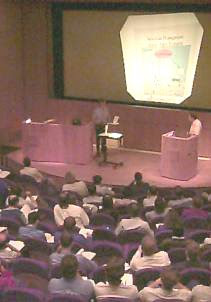Metal Foams & how to make them

This is a quick guide to making metal foams - mostly aluminium foams. It's drawn from one of the introduction chapters of my 2004 PhD thesis (the full version, with sources and experimental processes, is free to download here ). There are lots of different ways of making foams, with different levels of complexity. Aluminium is the most commonly made foam, because it's light and easy to work with - though some of these processes can work with other metals. This summary looks at a huge range of 'metal foams'. When thinking about ways to make a foam there's a lot to consider:








